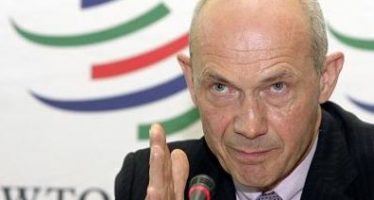Improved Resource Efficiency is Key to Asia-Pacific Progress
 The Asia-Pacific region, which has overtaken the rest of the world in consumption of raw materials as affluence and manufacturing increase, must boost its resource efficiency or risk losing ground in lifestyle, economic growth and environmental sustainability, according to a UN report released on April 24th.
The Asia-Pacific region, which has overtaken the rest of the world in consumption of raw materials as affluence and manufacturing increase, must boost its resource efficiency or risk losing ground in lifestyle, economic growth and environmental sustainability, according to a UN report released on April 24th.
From 1970-2008, consumption of construction minerals increased 13.4 times, metal ores and industrial minerals consumption 8.6, fossil fuels 5.4, and biomass 2.7 times, according to the report released by the United Nations Environment Programme (UNEP), entitled, ‘Recent Trends in Material Flows and Resource Productivity in Asia and the Pacific.’
The report highlights the region’s inefficient use of resources as measured by material intensity – consumption of materials per dollar of Gross Domestic Product (GDP) – as an area of serious concern. Currently, material intensity for Asia-Pacific is three that of times the rest of the world.
“Each dollar of GDP requires increasing amount of materials,” said Park Young-Woo, Director of the UNEP Regional Office for Asia and the Pacific.
The report found that the region is moving from biomass to a minerals-based economy, indicating that the most-populous countries like China and India are transitioning from agrarian to industrialized economies, UNEP reported.
According to figures cited, China is responsible for over 60 per cent of the region’s total domestic material consumption, and India for 14 per cent.
The rise in use of metal ores and industrial minerals use in India indicates that the country is entering a rapid acceleration phase in its transition to an industrialized economy, the UN agency notes.
Growing affluence and material intensity were the primary drivers of raw material consumption, and any attempts to regulate the industry would have to address both, the report stresses.
“The findings of the report conclude that countries in Asia and the Pacific face even greater challenges to make the transition of current economic growth patterns towards green growth, and to transform the economies into truly green economy, despite the strong efforts in development of policies and strategies by member countries,” said Mr. Park.
The report recommends the establishment a global harmonized database that shares material use data for all countries as an important step in helping policymakers and businesses anticipate resource issues, and to provide academia with reliable data to support decision makers with the policy relevant science.
You may have an interest in also reading…
Expo 2020: Selecting the Host City
Brazil, Russia, Thailand, Turkey, and the United Arab Emirates have all officially bid to host Expo 2020 by the 02
WTO: China’s Role in Global Economic Governance
By WTO Director-General Pascal Lamy Extracts from his Speech delivered at the China Development Forum in Beijing, 24 March 2013
Ugandan Oil PLC is Off the Starting Blocks
It looks like Uganda and some of the oil companies involved are finally about to reap the rewards that will



















































































